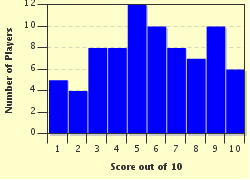Quiz Answer Key and Fun Facts
1. Len Bias was a bruising All American forward for the University of Maryland basketball team. He had just been selected by Boston Celtics as the second pick in the 1986 NBA draft. Two days later he was dead. What was the cause of his death?
2. Kenny Hubbs had a storybook high school athletic career. He was a first round draft choice of the Chicago Cubs baseball team, spurning offers to play basketball at UCLA for John Wooden and quarterback at Notre Dame. He was voted as the National League Rookie of the Year in 1962, but played only one more year. Why did his career end?
3. The life stories of baseball players Lou Gehrig and Harry Agganis were eerily similar. Both were left handed first basemen, who were football and baseball stars at their local colleges. Both played baseball in their own hometown and died prematurely (Gehrig of ALS and Agganis of a pulmonary embolism). Which American League team did Agganis play for?
4. Joe Delaney may be remembered more for his heroism than his achievements in sports - great though they were in his short career. He dove into a pond attempting to save the lives of three young children, even though he could not swim. In doing so, this star of one of the Kansas City teams drowned. Which sport did he play?
5. In January 1962 this young man was on the top of the world. He had completed his football career at Syracuse University, had been named the winner of the Heisman trophy as the best college football player, and was expecting to have a successful pro career. He was the first pick in the NFL draft and traded to Cleveland, where he would be able to play alongside his idol, Jim Brown. Within a year he was dead of leukemia. Who was he?
6. Probably the first European-based basketball player in the NBA who played an American style of play (i.e. more than just an outside shooter) was Drazen Petrovic of Croatia. He played for the silver medal winning Yugoslavian Olympic team that gave the original American Dream Team its best battle. He later starred in the NBA, averaging more than 20 points for the New York Nets. How did he die?
7. One of the most shocking deaths in American sports was the on-court death of Hank Gaithers, the star of the Loyola basketball team. He collapsed midway through the first half a conference playoff game due to a heart abnormality. His closest friend and teammate Bo Kimble honored his fallen teammate with an unusual way of playing tribute. What was it?
8. George Gipp is a figure shrouded in mystery and myth, made more so with his association with former President Ronald Reagan as the "Gipper". It's difficult to determine what is fact and what is fiction about this romantic figure. Which of these facts about George Gipp are NOT true.
9. Lyman Bostock was a 27 year old baseball player on the verge of superstardom when he died. He had played three seasons in Minnesota, finishing second and fourth in batting average for the entire league. He then signed a large contract to join the California Angels and was nearing the end of his first season with that team. How did he die?
10. On February 15, 1961 the first crash of a Boeing 707 in Brussels killed all the members of a team, which had a devastating effect on its fortunes for several years. Which team was it?
Source: Author
SixShutouts66
This quiz was reviewed by FunTrivia editor
gtho4 before going online.
Any errors found in FunTrivia content are routinely corrected through our feedback system.

